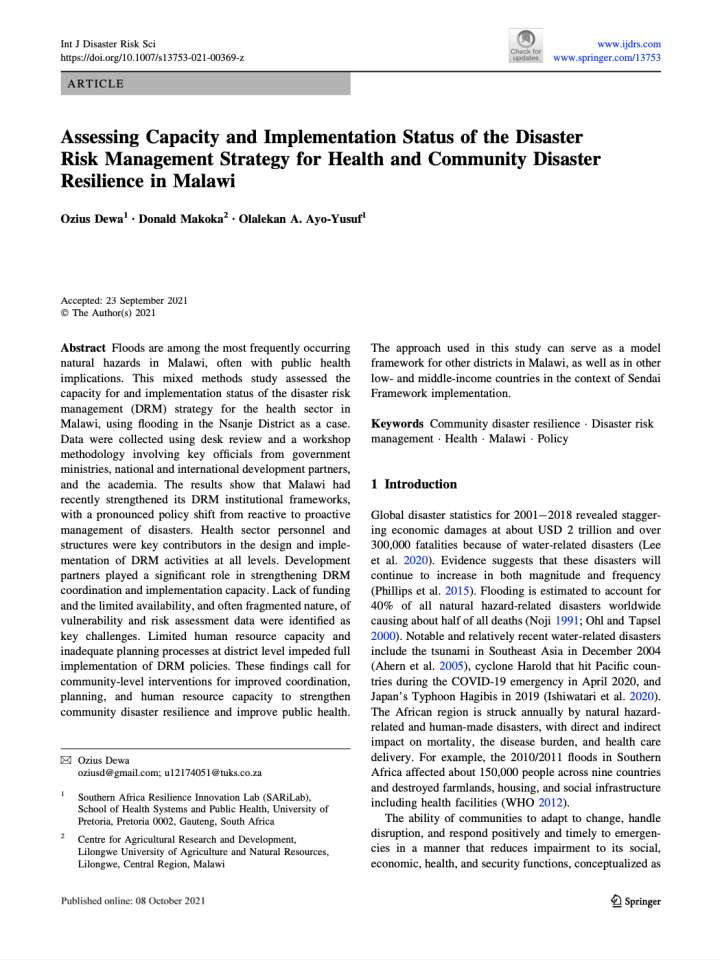Assessing capacity and implementation status of the Disaster Risk Management strategy for health and community disaster resilience in Malawi
This study assessed the capacity for and implementation status of the disaster risk management (DRM) strategy for the health sector in Malawi, using flooding in the Nsanje District as a case. Floods are among the most frequently occurring natural hazards in Malawi, often with public health implications. Data were collected using desk review and a workshop methodology involving key officials from government ministries, national and international development partners, and the academia.
The results show that Malawi had recently strengthened its DRM institutional frameworks, with a pronounced policy shift from reactive to proactive management of disasters. Health sector personnel and structures were key contributors in the design and implementation of DRM activities at all levels. Development partners played a significant role in strengthening DRM coordination and implementation capacity. Lack of funding and the limited availability, and often fragmented nature, of vulnerability and risk assessment data were identified as key challenges. Limited human resource capacity and inadequate planning processes at district level impeded full implementation of DRM policies. These findings call for community-level interventions for improved coordination, planning, and human resource capacity to strengthen community disaster resilience and improve public health. The approach used in this study can serve as a model framework for other districts in Malawi, as well as in other low- and middle-income countries in the context of Sendai Framework implementation.
Explore further
